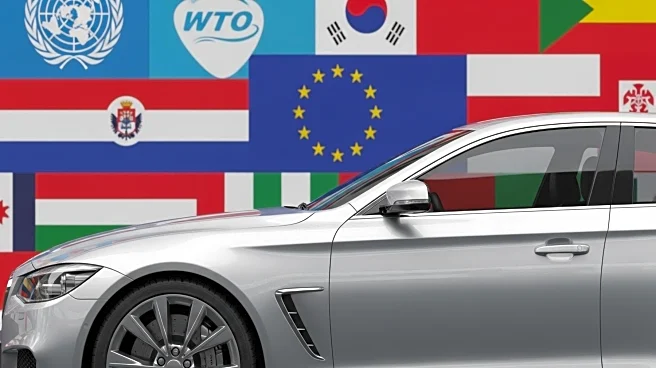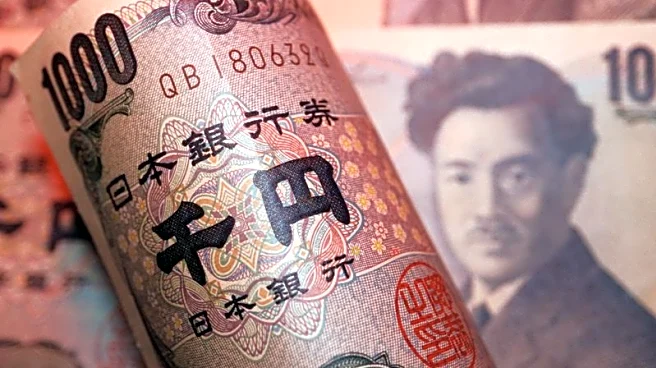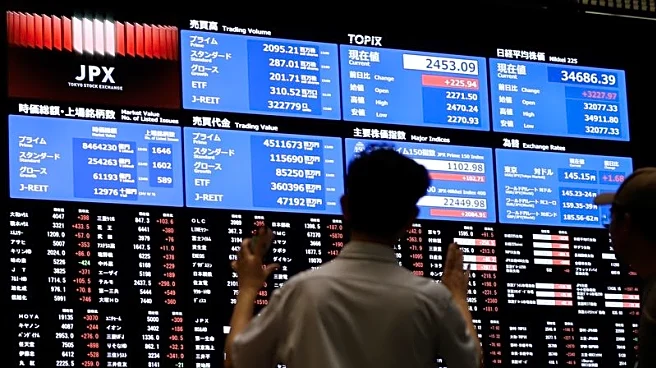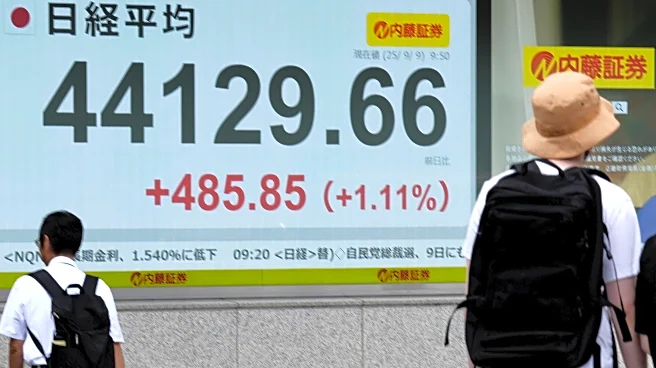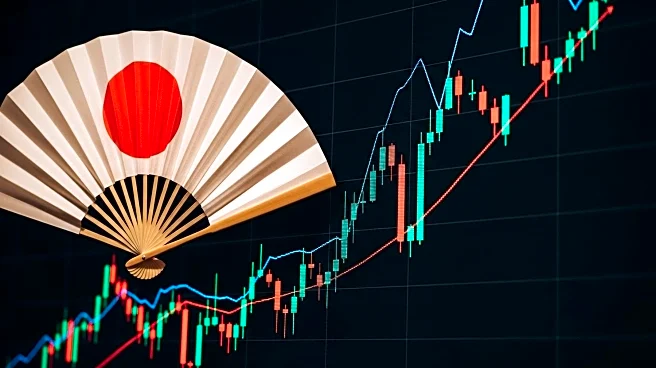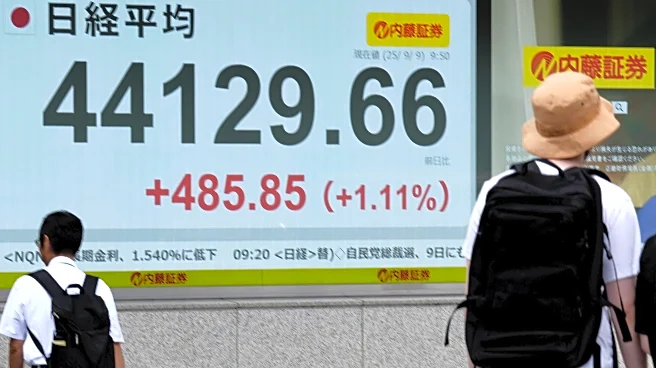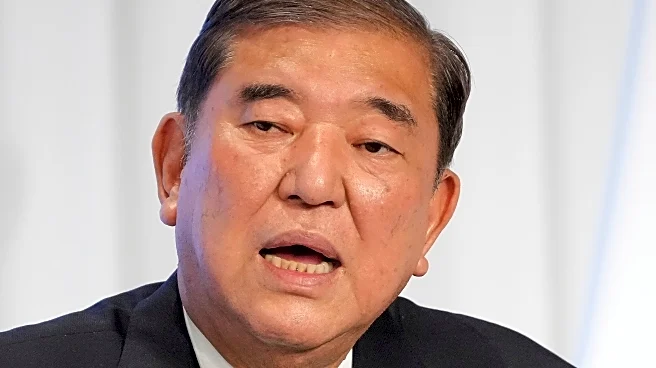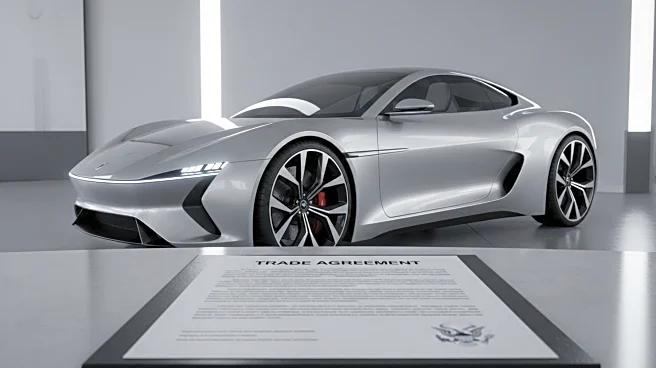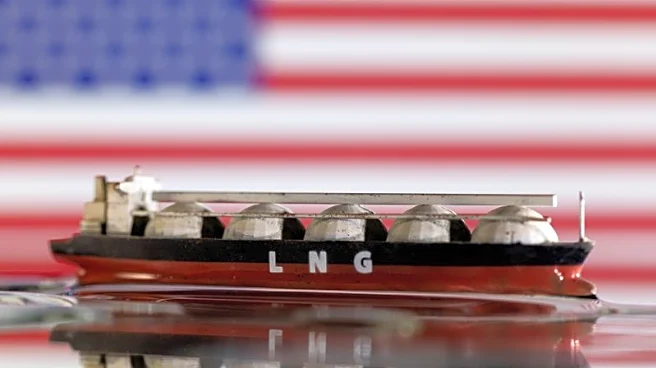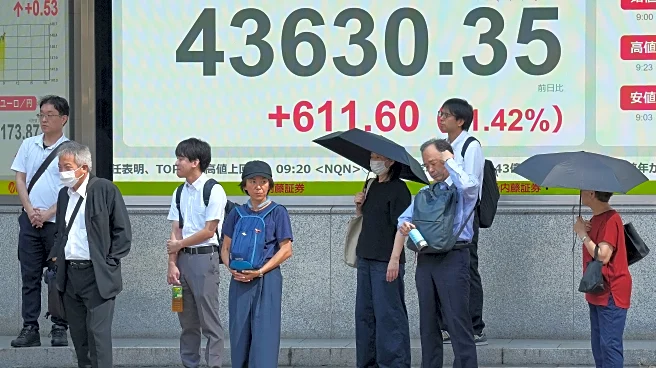What is the story about?
What's Happening?
President Trump has announced a reduction in tariffs on Japanese imports, specifically automobiles and auto parts, from 25% to 15%. This decision follows Japan's commitment to invest $550 billion in the U.S. and provide American producers with enhanced market access in sectors such as aerospace, agriculture, food, energy, and automobiles. The tariff reduction is expected to alleviate financial pressures on Japanese automakers like Toyota and Honda, who have reported significant projected losses due to the tariffs. Toyota anticipates a $9.5 billion reduction in operating income by 2026, while Honda faces a potential $450 billion yen profit loss this year.
Why It's Important?
The reduction in tariffs is significant for both Japanese automakers and the U.S. economy. It provides relief to companies facing substantial financial losses due to the tariffs, potentially stabilizing their operations and preserving jobs. For the U.S., the investment from Japan and increased market access for American producers could stimulate economic growth and enhance trade relations. This move may also influence other international trade negotiations, setting a precedent for tariff adjustments in exchange for economic investments and market access.
What's Next?
The tariff reduction is set to take effect on September 16, as confirmed by Japan's minister of economic revitalization, Ryosei Akazawa. Stakeholders, including automakers and industry leaders, will likely monitor the impact of this change on their financial performance and market dynamics. Further negotiations between the U.S. and Japan may continue to explore additional trade opportunities and investments.
AI Generated Content
Do you find this article useful?
